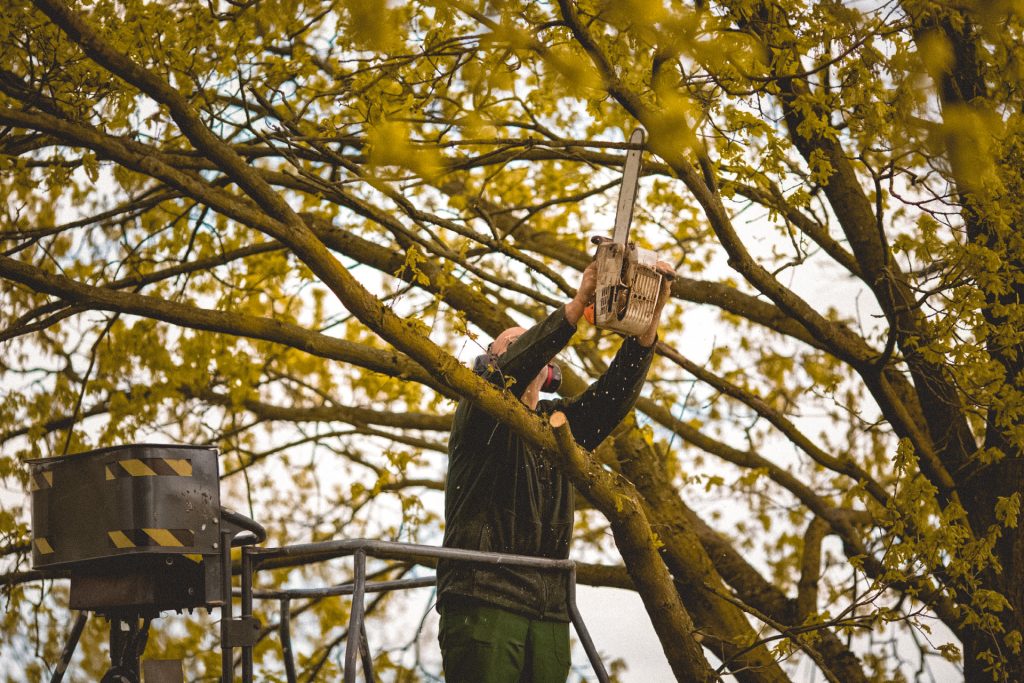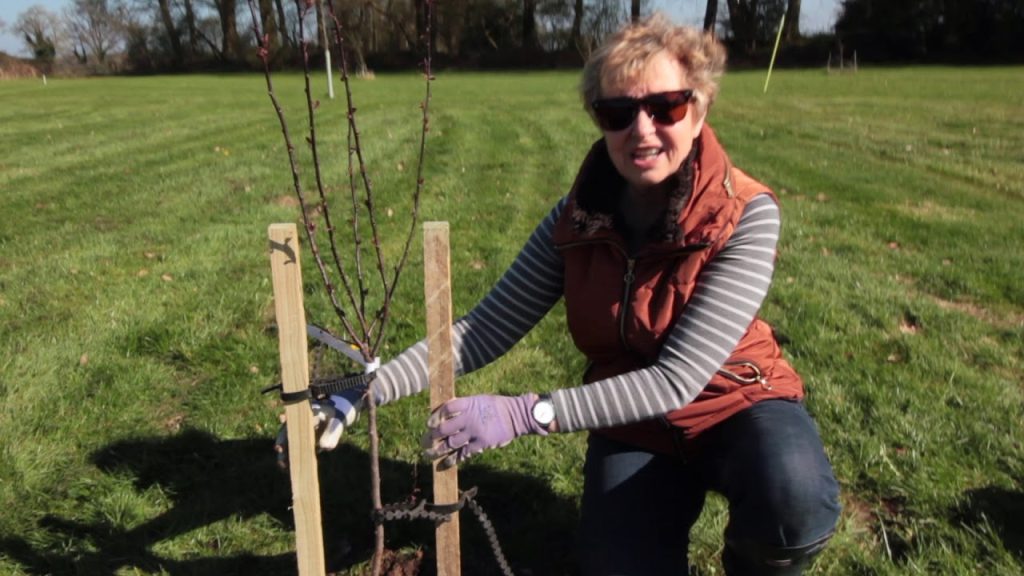Ferns on Palm Trees:Ferns are non-flowering, spore-producing plants that are commonly found growing atop palm trees. They are an epiphyte, which means they grow on the surface of other plants, such as palm palms, for support. Ferns on palm trees vary in size and appearance, but they all have fluffy, frond-like leaves that are usually green but can be any color. Learn How To Remove Ferns From Palm Trees?
Impact of Ferns on Palm Trees:
Positive impacts:
Ferns can offer a lush and tropical look to palm trees, improving the overall aesthetic appeal of the landscape.
Ferns provide refuge and a habitat for a variety of insects and tiny animals, contributing to the ecosystem’s biodiversity.
Ferns can help maintain moisture on palm tree trunks and fronds, which can be useful during dry periods.
Negative impacts:
Ferns compete with palm trees for resources such as sunlight, water, and nutrients. This competition might stifle the palm tree’s growth and overall health.
As ferns grow and spread, they can add weight to palm tree fronds and branches, potentially making them unstable and increasing the danger of damage during storms or severe winds.
Ferns can generate a damp microclimate on palm trees, which may attract pests and fungal diseases that are harmful to the palm tree.
Fern growth can restrict access to palm tree fronds and trunks, making it difficult to execute critical trimming and maintenance chores.
The Importance of Removing Ferns from Palm Trees
Ferns compete with palm trees for resources such as sunlight, water, and nutrients. This competition might stifle the palm tree’s growth and overall health. By removing ferns, palm trees can have access to additional vital materials, helping them grow.
As ferns grow and spread on palm trees, they can add weight to the fronds and branches. This added weight can make the palm tree less stable and more vulnerable to harm during storms or strong winds. Removing ferns contributes to the structural stability of the palm tree.
Ferns can generate a damp microclimate on palm trees, making them more vulnerable to pests and fungal diseases. By removing ferns, you reduce moisture levels and lessen the attractiveness of potential hazards to the palm tree’s health.
While ferns can provide a tropical and lush aspect to palm trees, their overgrowth can become unattractive. Thick layers of ferns can obscure the view of the palm tree’s natural beauty and make the tree appear unkempt. Removing extra fern growth improves the overall appearance of the landscape.
Dense fern growth can restrict access to palm tree fronds and trunks, making necessary trimming, maintenance, and inspections difficult. By eliminating ferns, you provide for easier access to the palm tree’s vital maintenance and upkeep.
Understanding Perplexity
Perplexity in the context of palm tree fern removal refers to the task’s level of intricacy. It’s not just a matter of cutting or tugging; it’s a complex grasp of the palm tree’s ecosystem and the fern’s activity.
Embracing Burstiness
To properly clear your palm trees of ferns, you must embrace burstiness in your technique. This entails introducing a wide range of tactics and strategies. Some may be simple and quick, while others may be more complicated and time-consuming. Burstiness admits that there is no one-size-fits-all solution to the green dilemma.
The Problem of Predictability
In this setting, predictability presents a particular problem. Ferns can be stubborn, and their development patterns aren’t always predictable. The prediction factor is low since you can’t always predict how the ferns will react to your eradication efforts.
Step-by-step guide
1 Tools and materials you’ll need:
- Gardening gloves
- Pruning shears or loppers
- Shovel or garden fork
- Trash bags or a compost bin
- Mulch or ground cover (optional)
- Wear proper safety gears
Identifying ferns:
Identifying ferns can be an intriguing and rewarding endeavor, as these ancient plants come in various shapes and sizes.
Observe the fronds
Look for fronds that are lance-shaped, triangular, feather-like, or more intricate.
Look at how the fronds are separated. Are they pinnate (feather-like with smaller leaflets) or palmate (leaves radiate from a central point)?
Take note of how the leaflets on the fronds are arranged. Is it opposite, alternating, or clustered?
Study the Leaflet Margins
A serrate fern has fine, saw-toothed serrations on the leaflet edge
Ferns with smooth, unbroken leaflet edges are known as whole or smooth-margined ferns.
Some ferns have lobed leaflets with rounded or irregularly formed edges.
Look at the spot Patterns
Ferns reproduce by spores, and the arrangement of spore structures (sori) on the underside of fronds can help identify them:
Sori Arrangement:
Take note of whether the sori are arranged in rows, clusters, or other patterns on the underside of the frond.
Some ferns contain protective coverings called indusia that cover their sori, but others do not.
Trim Excess Growth
To make access to the main fern plant simpler, use pruning shears or loppers to clip down any unwanted fern growth at the base of the plants. This first trimming simplifies the removal process.
Dig around the Ferns
Now, using a shovel or garden fork, carefully dig around the ferns, being cautious not to damage any surrounding valuable plants. This technique exposes the ferns’ root systems, making them more easily removed.
Get Rid of the Ferns
With the ferns’ roots exposed, gently but firmly take the ferns out of the ground. Attempt to extract as many roots as possible to prevent regrowth. As you remove each fern, store it in garbage bags or a compost bin. If the ferns are invasive, do not compost them since they will spread.
Prune and Remove the Roots
After you’ve removed the ferns, check the area for any leftover roots or root fragments. These remains have the potential to regenerate and should be eradicated. Cut any remaining roots with pruning shears.
Eliminate the Ferns
Dispose of the ferns you’ve removed in accordance with your local legislation and recommendations. Avoid dumping them in natural areas where they may spread and become invasive.
Fill the Void
Consider filling the gap created by the eliminated ferns with mulch or ground cover. This serves a dual purpose, preventing further weed growth and enhancing the visual appeal of your garden.
Check for Regrowth
It is critical to maintain vigilance. Examine the area on a regular basis for any evidence of fern regrowth. Early detection and prompt removal can prevent reinfestation and help you maintain control over your garden’s greenery.
Implement Preventative Measures
To discourage future fern regrowth, consider implementing preventative measures. Applying mulch, installing physical barriers, or employing selective herbicides can all play a role in safeguarding your garden against the return of unwanted ferns.
Related Posts:
How to Remove Tree Roots from Lawn?
FAQS
Are all ferns damaging to palm trees?
No, not all ferns are dangerous. However, some invasive or aggressive fern species can compete for nutrients with palm trees and harm their health.
Can I use pesticides to eliminate ferns from palm trees?
Herbicides can be successful in eradicating ferns, but they should be used with caution. Make sure the herbicide is appropriate for your palm tree species and carefully follow the manufacturer’s recommendations.
Will removing ferns hurt my palm tree?
Properly performed fern removal should not harm palm trees. In reality, it can benefit palm trees by lowering competition for resources and boosting their overall health.
Can ferns regrow after being cut down?
Yes, ferns may recover from root fragments or spores. Thorough clearance and close monitoring are required to prevent regrowth.
When is the ideal time to remove ferns from palm trees?
The optimal period for fern removal is often late winter or early spring, when the ferns are dormant and before new growth begins.
Conclusion
Removing ferns from palm trees is a vital task for maintaining the health and aesthetics of your landscape. Follow right techniques tools and guidelines to properly remove ferns from palm trees, ensuring tree’s health and visual aesthetics



